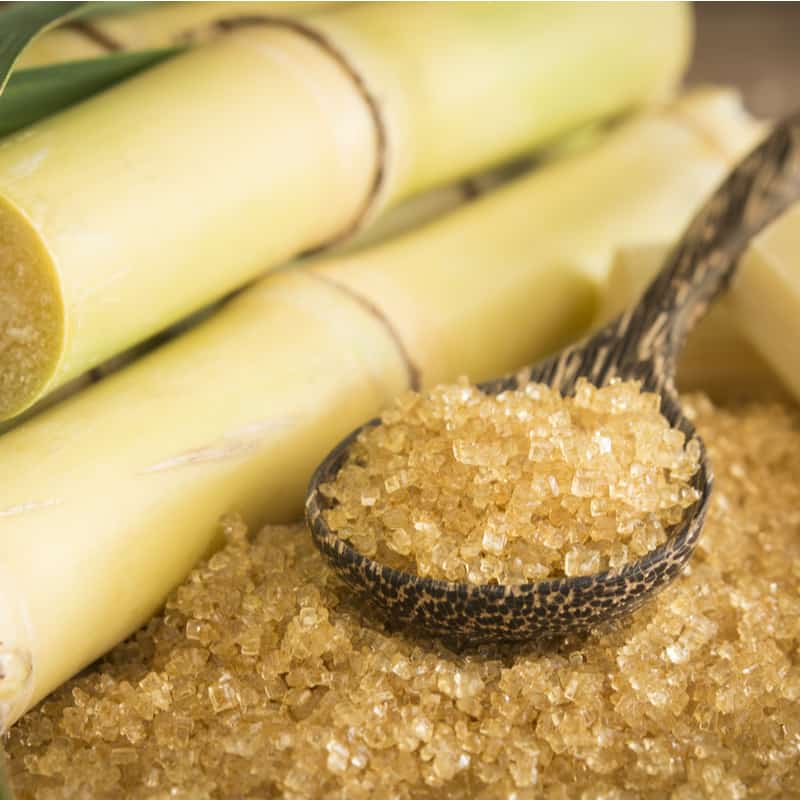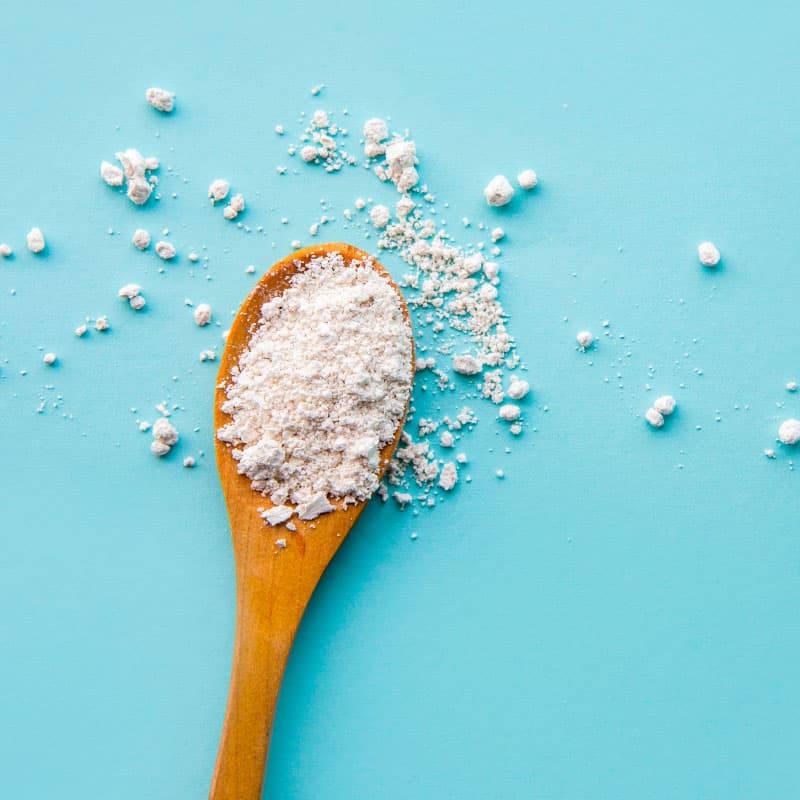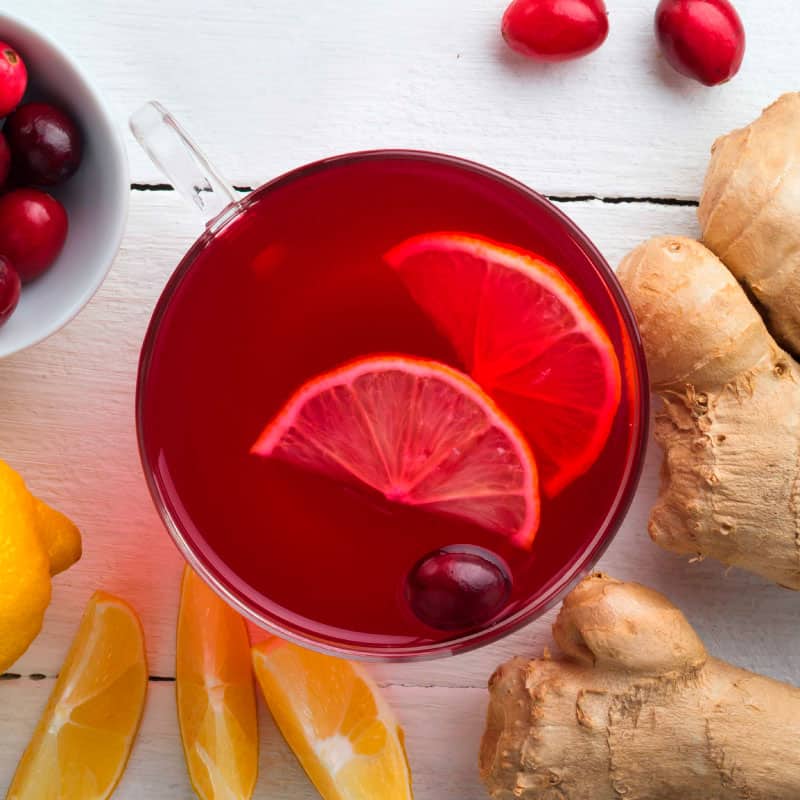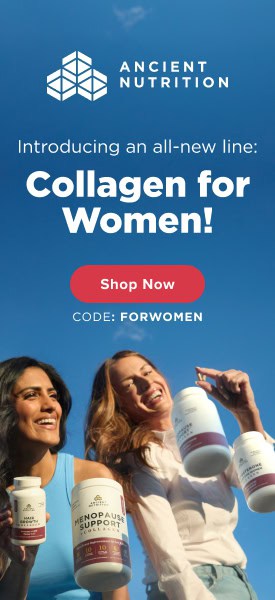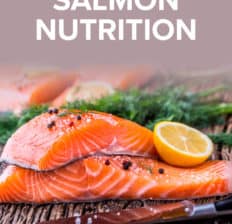This Dr. Axe content is medically reviewed or fact checked to ensure factually accurate information.
With strict editorial sourcing guidelines, we only link to academic research institutions, reputable media sites and, when research is available, medically peer-reviewed studies. Note that the numbers in parentheses (1, 2, etc.) are clickable links to these studies.
The information in our articles is NOT intended to replace a one-on-one relationship with a qualified health care professional and is not intended as medical advice.
This article is based on scientific evidence, written by experts and fact checked by our trained editorial staff. Note that the numbers in parentheses (1, 2, etc.) are clickable links to medically peer-reviewed studies.
Our team includes licensed nutritionists and dietitians, certified health education specialists, as well as certified strength and conditioning specialists, personal trainers and corrective exercise specialists. Our team aims to be not only thorough with its research, but also objective and unbiased.
The information in our articles is NOT intended to replace a one-on-one relationship with a qualified health care professional and is not intended as medical advice.
Salmon Nutrition: Wild-Caught Salmon Protects the Brain, Bones, Eyes, Skin & More
April 29, 2024
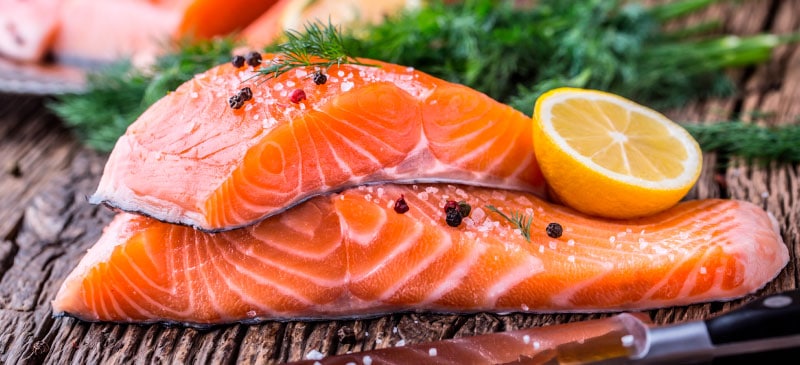
When it’s wild-caught and not farmed, salmon fish is one of the most nutritious foods on the planet and one of the best fish to eat. It’s credited with everything from extending the life span to preventing heart attacks and cancer. And not only does the salmon nutrition profile possess one of the highest omega-3 contents of any type of fish, but each serving is also packed with tons of other vitamins, minerals and salmon protein as well.
Research has continued to unearth a long list of potential salmon health benefits. Studies show that it can do everything from help boost brain function to improve bone and skin health.
Plus, it’s delicious, easy to add to the diet and can fit into just about any recipe.
What Is Salmon?
Salmon is a term used to refer to any type of fish in the Salmonidae family, including species like trout, white fish and grayling. These fish are ray-finned and native to the North Atlantic and Pacific Oceans.
Most species are also anadromous, meaning they hatch in fresh water, move to the ocean, and then return to the fresh water again to spawn and reproduce.
Salmon can be divided into two main categories based on where they originated: Atlantic salmon and Pacific salmon. From there, they can be further broken down into several main species, including:
- Atlantic Salmon
- Chinook Salmon
- Chum Salmon
- Coho Salmon
- Masu Salmon
- Pink Salmon
- Sockeye Salmon
Wild-caught salmon is often considered one of the healthiest fish available. In fact, take a look at the sockeye salmon nutrition profile or the grilled salmon nutrition facts, and you’ll notice that each serving supplies a good amount of protein, heart-healthy fats, and important vitamins and minerals for a low amount of calories.
For this reason, most health organizations and experts recommend including one to two servings of this nutritious ingredient in your diet each and every week.
This fish has been consumed throughout history and can even be traced back 5,000 years ago to remnants discovered from the Nisqually Indian Tribe. Not only did humans depend on salmon as an important source of food, but many wildlife species did and still do today.
Additionally, it has also played a central role in many aspects of spirituality and religion. It was considered sacred to Native American tribes and is thought to have guided the native people toward developing a strong respect for the balance of the delicate ecosystem. The flesh of the salmon was commonly consumed, but they were also careful to not let any parts go to waste, using the skin to make clothing and the bones for toys.
This fish is also often featured in mythology and can be found in many ancient Celtic, Irish, Norse and Welsh stories.
Researchers have gained a renewed interest in this healthy seafood and the potential health benefits that it can provide. It has been studied extensively for its powerful ability to promote heart health, boost brain function and reduce inflammation, while improving overall health with just a few servings per week.
Salmon Nutrition Facts
Although there are some minute differences between different types of salmon, such as smoked salmon nutrition vs. canned salmon nutrition, this fish is considered one of the top nutrient-dense foods. This is because, even though there are a low amount of calories in salmon nutrition, there’s a good amount of heart-healthy fats, vitamins, minerals and protein.
A three-ounce serving of cooked wild-caught salmon nutrition (about 85 grams) contains approximately:
- Calories: 155
- Total Fat: 6.9 g
- Saturated Fat: 1.1 g
- Polyunsaturated Fat: 2.8 g
- Monounsaturated Fat: 2.3 g
- Trans Fat: 0 g
- Protein: 21.6 g
- Sodium: 47.6 mg (2% DV*)
- Vitamin B12: 2.6 mcg (108% DV)
- Selenium: 39.8 mcg (72% DV)
- Niacin: 8.6 mg (54% DV)
- Vitamin B6: 0.8 mg (47% DV)
- Copper: 0.3 mg (33% DV)
- Pantothenic Acid: 1.6 mg (32% DV)
- Riboflavin: 0.4 mg (31% DV)
- Phosphorus: 218 mg (17% DV)
- Thiamine: 0.2 mg (17% DV)
- Potassium: 534 mg (11% DV)
- Magnesium: 31.4 mg (7% DV)
- Folate: 24.6 mcg (7% DV)
- Zinc: 0.7 mg (6% DV)
- Iron: 0.9 mg (5% DV)
*Daily Value: Percentages are based on a diet of 2,000 calories a day.
In addition to the nutrients listed above, salmon nutrition also contains some vitamin A and calcium.
Benefits
The wild-caught salmon nutrition profile makes it one of the world’s healthiest foods. High in a number of important vitamins and minerals, it boasts many benefits for the entire body, largely thanks to its high content of omega-3 fatty acids.
Here are proven wild-caught salmon health benefits:
1. High in Vitamin D
Containing nearly a day’s worth of vitamin D in just one serving, eating wild-caught salmon fish helps maintain optimal health in a variety of ways, and it’s important to note that wild-caught salmon nutrition contains up to 25 percent more vitamin D than farmed salmon nutrition, according to research out of Boston.
This is important as vitamin D deficiency is linked to everything from cancer to multiple sclerosis, rheumatoid arthritis and heart disease. This stresses the need for all of us to get plenty of sun exposure, supplement or eat vitamin D-rich foods on a regular basis.
2. Improves Bone Health
Research suggests that the omega-3 fatty acids found in fish or fish oil could help enhance bone health to keep conditions like osteoporosis at bay. In fact, using records spanning 15 years from the Women’s Health Initiative, Ohio State University researchers observed that women with higher levels of omega-3 fatty acids in their blood experienced fewer hip fractures.
Inflammation contributes to bone resorption, a process in which bone tissue is broken down. Since omega-3-rich salmon is a natural anti-inflammatory food, eating this delicious fish on a regular basis is a great way to keep your bones strong.
3. Boosts Brain Function
Omega-3-rich foods have been shown to increase the efficiency of various brain functions, including improved memory. Omega-3 fatty acids can also relieve inflammation to protect the nervous system from oxidative stress and age-related damage, and they may possibly act as antidepressants as well.
Plus, some animal studies even suggest that long-term omega-3 supplementation can help prevent and treat Alzheimer’s disease and Parkinson’s symptoms.
Salmon provides both EPA and DHA, two types of essential fatty acids that the body uses to reduce inflammation, resulting in improved brain function.
4. May Prevent ADHD in Children
Research shows that children who regularly eat this fish also experience the same brain-boosting benefits as their parents. Specifically, various studies suggest that feeding this fish to children helps prevent ADHD symptoms and boost academic performance.
The nutrition of this seafood helps children focus better and remember more.
5. Promotes Heart Health
Salmon is considered one of the top heart-healthy foods. Since it’s rich in omega-3 fatty acids, regular consumption can help reduce systemic inflammation and the risk of developing atherosclerosis, hypertension and stroke.
Regarding dosage, a study published by the School of Medicine and Pharmacology at the University of Western Australia reports: “Health authorities currently recommend an intake of at least two oily fish meals per week for the general population which equates to approximately 500 mg per day of eicosapentaenoic acid and docosahexaenoic acid [two key omega-3 fatty acids]. In patients with coronary heart disease the guidelines recommend 1 g daily supplements and in hypertriglyceridemic patients up to 4 g per day.”
6. Enhances Eyesight
Eating this fish could help relieve dry eye syndrome and age-related macular degeneration symptoms, the No. 1 cause of irreversible blindness in the United States and European Union. Omega-3s are also thought to improve the drainage of intraocular fluid from the eyes and decrease the risk of glaucoma and high eye pressure.
The omega-3 fatty acids found in salmon nutrition are also essential for eye development in infants.
7. Optimizes Skin Health
Because of its exceptional levels of omega-3 fats, consuming wild-caught salmon may help provide glowing and more supple skin. Also, the carotenoid antioxidants of astaxanthin found in it can greatly reduce the effects of free radical damage, which contributes to skin aging.
For this reason, dermatologists around the world frequently recommend consuming more wild-caught salmon to keep skin bright and healthy.
8. May Fight Cancer Development
Any discussion about the health benefits of omega-3-rich salmon would not be complete without mentioning the evidenced-based effects this superfood can have on cancer. Of the thousands of peer-reviewed scientific papers discussing omega-3 fatty acids and cancer, one point is clear: Omega-3 fatty acids can have a profound effect on not only preventing cancer, but helping fight tumor growth and development.
In fact, there are in vitro, human and animal studies to support this correlation between omega-3 fats and many types of cancer, including:
- Non-specific human cancer cells
- Breast cancer cells
- Colorectal cancer cells
- Prostate cancer
- Malignant brain tumors
- Liver cancer
- Skin cancer
- UVB-induced skin cancer
It’s also noteworthy to mention that some of these studies suggest that cancer patients typically experience measurable benefits when omega-3-rich fish are consumed even just once per week, making omega-3 foods some of the top cancer-fighting foods on the planet.
Salmon is appreciated for its impressive nutrient profile and health-promoting properties in several types of holistic medicine, including Ayurveda and Traditional Chinese Medicine.
On an Ayurvedic diet, it is considered heavy and satisfying. It’s said to have a tamasic effect, meaning it can help promote rest, and is thought to satisfy and warm the stomach.
According to Traditional Chinese Medicine, meanwhile, this fish is believed to be warming and can help tonify the blood and the qi, which is the flow of energy through the body. It is also used to help fertility by nourishing the yin, which is considered the female principle of the universe.
Salmon vs. Tuna
Salmon and tuna are two of the most popular fish varieties available, especially when it comes to flavor, convenience and health benefits.
Much like salmon, tuna fish is low in calories but jam-packed with protein and healthy fats — and much like the wild-caught Atlantic salmon nutrition facts, tuna also contains a concentrated amount of selenium, vitamin B12 and niacin.
In terms of taste, tuna is more mild and less fishy while salmon is considered more juicy, rich and tender. Both are available in fresh and canned forms and can be cooked and used similarly in your favorite recipes.
In fresh form, however, there are some differences in the parts that are commonly consumed. For instance, many people wonder: Can you eat salmon skin or tuna skin? While salmon skin can be used to add a crunch to dishes, the skin of the tuna fish is often too tough to consume.
Mackerel fish is another good type to eat.
Wild-Caught vs. Farmed
According to a report by the National Oceanic and Atmospheric Administration, “There’s a bit of a gray area here … some ‘wild-caught’ seafood actually starts its life in a hatchery.”
This should raise some serious eyebrows because it could be that, like most shellfish, a significant amount of “wild-caught” salmon is raised in hatcheries and then released to the wild to be caught. Essentially, this negates the term “wild-caught.”
We see the same protocol with farm-raised yellowtail, which are caught as juveniles in the wild and then raised to maturity in captivity.
In a nutshell, just because the package says “wild-caught” doesn’t mean that it’s good for you.
This is why I recommend true Alaskan wild-caught salmon. It is typically the least contaminated species.
Other varieties that are known to contain minimal to no toxins include:
- Southeast Alaskan chum
- Sockeye
- Coho
- Pink
- Chinook
- Kodiak Coho
Bottom line: As long as your salmon is from a true wild-caught source, it is one of the best sources of omega-3s there is. Plus, it is an amazing powerhouse of many other vitamins and minerals.
But wait, didn’t I read somewhere that salmon is highly toxic and contaminated with mercury and dioxins? It absolutely depends on where you get it.
Salmon is marketed as one of nature’s most potent superfoods, yet most salmon (and other fish like tilapia) on the market today is farm-raised. Let me be clear: Farmed salmon is on the list of fish you should never eat.
There’s a lot of conflicting information out there in terms of safe salmon sources. Some claim that only 50 percent of the fish in our markets are farm-raised, while others state that it could be much more.
One thing we do know: The majority of all the fish we eat is imported. The problem with imported sources is that foreign manufacturing standards are not monitored and have been linked to having dangerous levels of:
- Mercury
- Pesticides
- Dioxins
- Dioxin-like compounds (DLCs)
- Polychlorinated biphenyls (PCBs)
Also, because of the poor nutritional feed they are sometimes given, compared to their wild-caught counterparts, farm-raised salmon:
- Contain just a fraction of heart-healthy omega-3s
- Contain a significant level of toxins, pesticides and antibiotics
- Are fed a dangerous reddish-pink dye in their food to make their flesh an unnatural red color
A 2011 study published in PLoS One found that mice eating farmed salmon actually showed weight gain and an increased risk of metabolic syndrome and type 2 diabetes symptoms. This is a result of persistent organic pollutants, or POPs, that tend to be high in farmed salmon. The study looked specifically at organochlorine pesticides, dioxins and PCBs.
Additionally, in November 2015, the U.S. Food and Drug Administration approved the sale of genetically engineered salmon and does not require any labeling, leaving consumers in the dark.
Despite the numerous health benefits of wild salmon nutrition, farmed salmon is not only less nutritious, but it can actually be dangerous for your health.
How to Add to Diet
Salmon is widely available in the seafood section of most grocery stores as well as fish markets around the globe.
It’s important when shopping for it that you also pick a healthy, fresh fish. You should ask your fishmonger when it got the fish in or even find out when it gets its fish in advance before you go shopping.
Some things to look for are:
- Clear eyes
- Consistent coloring, no dark spots
- Firm flesh that springs back to the touch
- Flesh intact with bone
- Free of cuts on belly area or other parts of the body
- Free of discoloration
- Fresh smelling (not fishy)
- No slime in gills
- Red gills bright in color
When you do select a healthy salmon to eat, be sure to store it properly. It should be stored in the coldest part of the refrigerator, such as the meat drawer or the lowest shelf in the back of the fridge.
From baking to grilling, sautéing and roasting, there are plenty of methods for how to cook salmon and enjoy it in your daily diet. This fish works well as a main course served alongside some roasted veggies, but it can also be added to salads, burgers, pizzas, sauces and omelets.
There are plenty of easy salmon recipe ideas out there, and with a little creativity, you can easily find limitless options for how to enjoy it.
Need a little inspiration? Here are a few of the best salmon recipes for you to try at home:
- Teriyaki Baked Salmon
- Blackened Salmon
- Grilled Honey Glazed Salmon
- Salmon Stir Fry
- Almond Crusted Salmon
- Salmon Patties
Risks and Side Effects
If you have a fish allergy, you should avoid salmon and any other types of seafood. If you experience any food allergy symptoms like itching, swelling or hives after eating it, discontinue use immediately, and talk to your doctor.
Additionally, while wild-caught salmon can be a healthy and delicious part of the diet, farmed salmon can be highly toxic and contaminated with unhealthy ingredients and contaminants that can harm your health. Opting for Alaskan wild-caught salmon or other healthy wild varieties is the best way to ensure you’re getting your salmon from a safe source.
Also, it’s important to enjoy this fish as part of a healthy diet and have it in your favorite nutritious recipes to maximize the potential health benefits. Frying it up or adding it to unhealthy foods like sushi can diminish the health-promoting properties of this powerful superfood.
Finally, although it is considered a low-mercury fish, children and women who are pregnant or breastfeeding should keep intake in moderation and stick to just a few servings per week to minimize mercury exposure.
Final Thoughts
- Salmon is any type of fish belonging to the Salmonidae family. Some of the most common kinds include Atlantic and sockeye.
- Each serving contains a low amount of salmon calories but packs in tons of protein, omega-3 fatty acids, and important vitamins and minerals.
- Studies show that eating salmon may offer a variety of benefits, including better brain health, improved vision and stronger bones.
- However, farmed salmon can be high in toxins and contaminants, plus lower in certain nutrients, making it crucial to pick from a safe source and opt for wild-caught salmon whenever possible.




